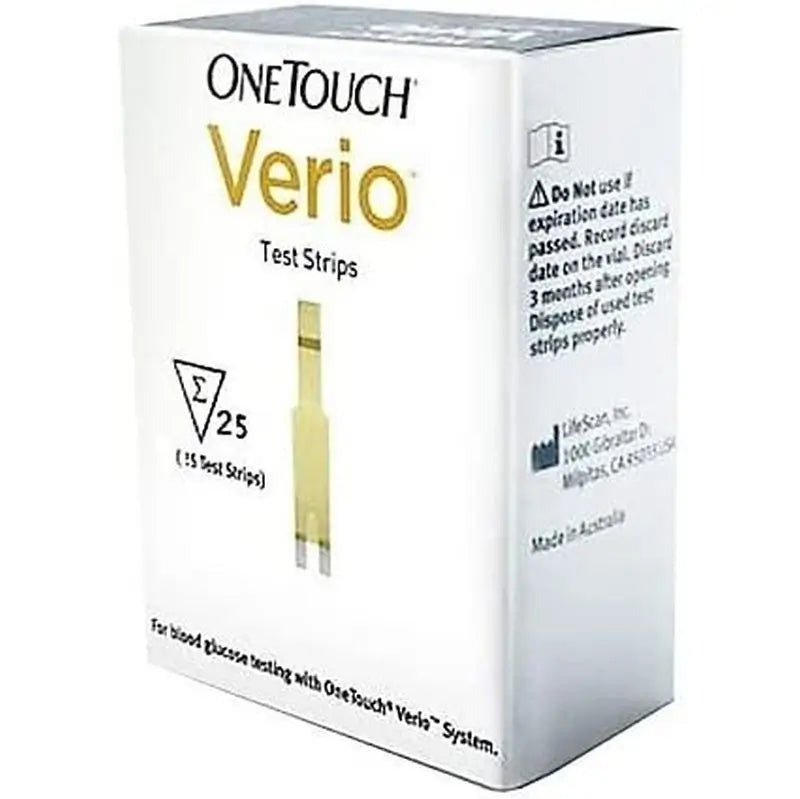OneTouch Verio Systems are used for self testing outside the body (in vitro diagnostics) by people with diabetes at home and by healthcare professionals in a clinical setting as an aid to monitor the effectiveness of diabetes management, and are specifically intended for use on the finger, palm or forearm. They should not be used for: - diagnosis of diabetes - neonatal testing - patients within 24 hours of performing a D-xylose absorption test, as erroneously high results may be obtained.

Low glucose results: If your test result is less than 70 mg/dL or if the indication low glucose appears, it may be a sign of hypoglycaemia (low blood glucose). This may require immediate treatment as directed by your healthcare professional. Although this result could be due to a testing error, it is safer to treat first and then test again. Dehydration and low glucose results: You may get false low glucose results if you are severely dehydrated. If you think you are severely dehydrated, contact your healthcare professional immediately. High glucose results: If your test result is higher than 180 mg/dL, it may be a sign of hyperglycaemia (high blood glucose) and you should consider repeating the test. Consult your healthcare professional if you are concerned about hyperglycaemia. High blood glucose appears if your blood glucose is above 600 mg/dL.
You may have severe hyperglycaemia (very high blood glucose). Repeat the test. If the result comes back as high blood glucose, this indicates a serious problem with your blood glucose control. Consult your healthcare professional immediately and follow instructions. Blood glucose monitoring requires the help of a healthcare professional. Together you can set your own recommended blood glucose range, decide when to test, and discuss the meaning of your results.
